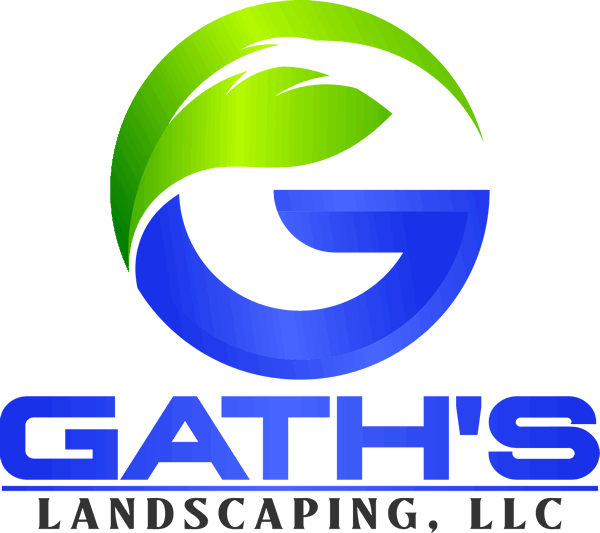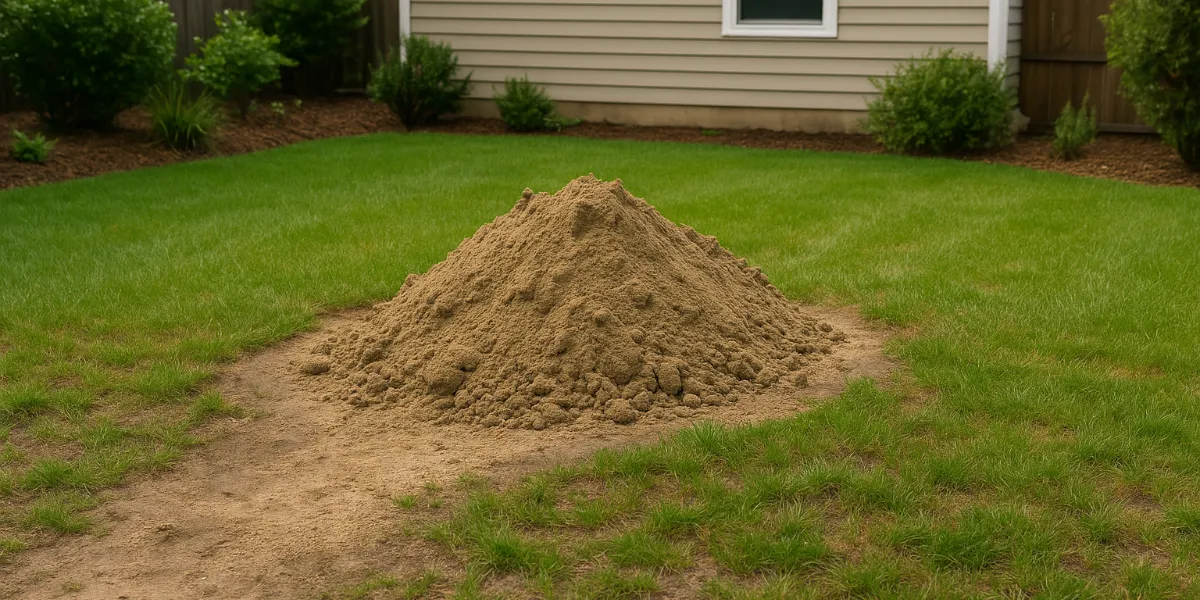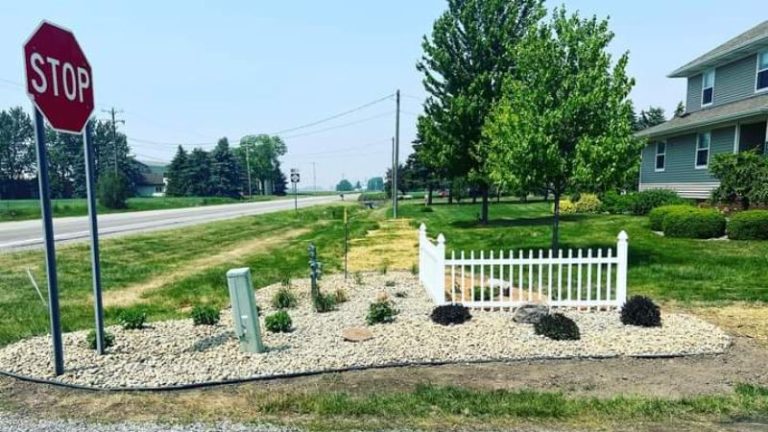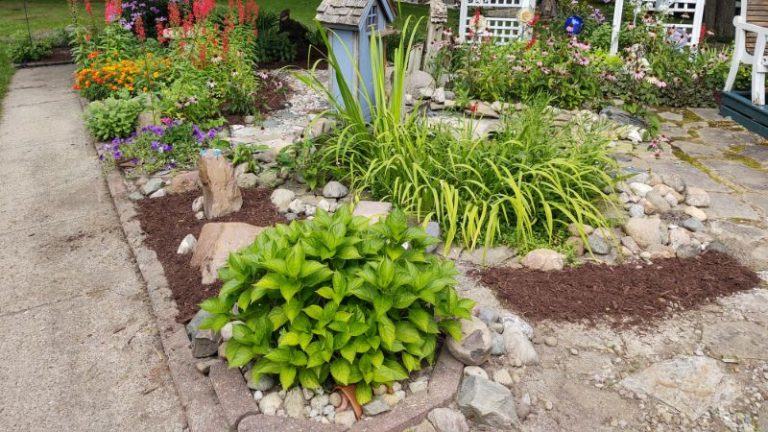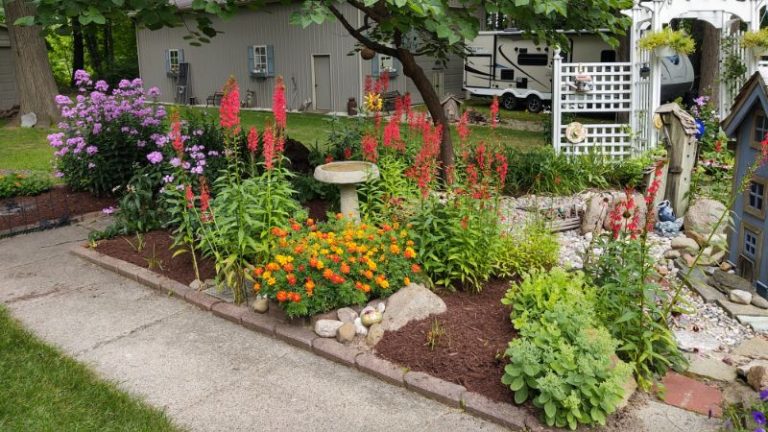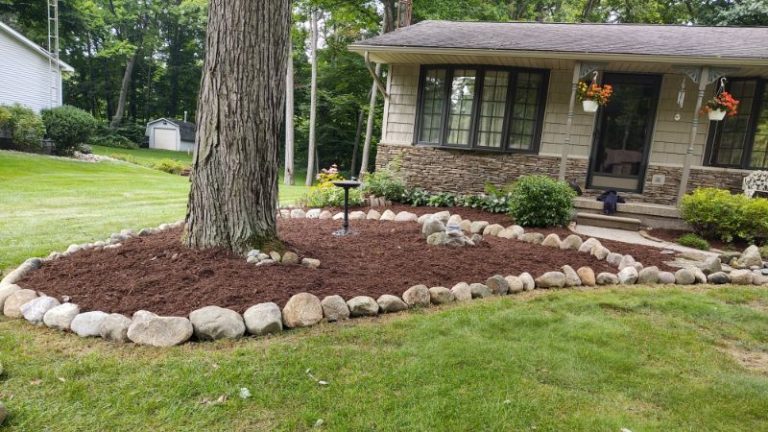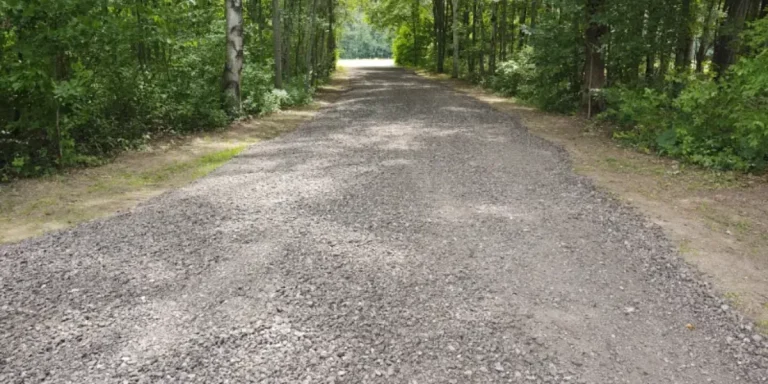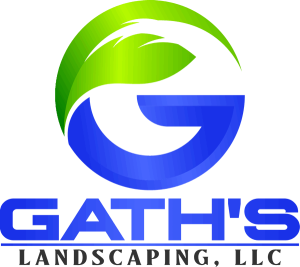What’s the Best Fill Material for Grading a Yard?
Grading your yard properly is one of the most important steps in managing drainage, preventing water damage, and preparing for landscaping or hardscaping. But one of the most common questions we hear from homeowners around Clio is: “What’s the best fill material to use for grading my yard?”
The answer depends on your property’s soil, drainage needs, and long-term goals. In this post, we’ll break down the most effective grading materials, when to use them, and how Gath’s Landscaping can help you do the job right the first time.
Why proper grading matters
Poor grading can lead to:
-
- Water pooling near your foundation
- Soggy or unusable lawn areas
- Erosion that damages gardens, mulch beds, or hardscapes
- Pest and mosquito problems in damp zones
By reshaping your yard to slope water away from structures and problem areas, Gath’s Landscaping can protect your property and lay the groundwork for future improvements like sod installation, planting, or paver patios.
Best fill materials for grading a yard
Not all fill materials are created equal—and choosing the wrong one can lead to poor drainage, unstable ground, and recurring landscaping headaches. At Gath’s Landscaping, we help homeowners throughout Genesee County select the right material based on how the yard is being used, the underlying soil conditions, and what comes next (like seeding, sod, or hardscaping).
Here’s a breakdown of the most effective fill materials and when each one makes sense.
1. Clean fill dirt (subsoil)
Clean fill dirt is one of the most reliable and cost-effective materials used to shape and level yards during grading.
Best for:
-
-
- Building up sunken areas and low spots
- Creating a proper slope away from your home’s foundation
- Raising or leveling large portions of a yard before landscaping
-
Benefits:
-
-
- Affordable and readily available in bulk
- Easy to compact and grade with the right equipment
- Offers a strong, stable base under other materials
-
We typically use clean fill dirt during major regrading projects, especially when significant elevation changes are needed. It's compacted in layers to prevent future settling, then topped with screened topsoil to prepare for new lawn installations or garden bed construction.
2. Screened topsoil
While screened topsoil isn’t meant to support weight or provide structure, it’s an essential component for the final grading layer—especially if you’re planning to grow grass, install sod, or plant shrubs and trees.
Best for:
-
-
- Smoothing out the yard’s final surface
- Preparing the ground for grass seed or sod
- Shaping raised planting beds and natural landscape contours
-
Benefits:
-
-
- Rich in nutrients for healthy plant growth
- Rake-friendly for achieving a smooth, even finish
- Blends seamlessly into most native soils
-
At Gath’s Landscaping, we deliver and spread high-quality screened topsoil as the finishing touch on grading jobs. This is especially important when combining services like drainage improvements or landscape design, where performance and appearance go hand in hand.
3. Crushed stone or limestone screenings
For areas that see a lot of water or foot and vehicle traffic, crushed stone or limestone screenings provide superior stability and drainage compared to dirt-based fill.
Best for:
-
-
- Resolving soggy areas or backyard swales
- Creating sturdy sub-bases under gravel driveways, walkways, or paver patios
- Redirecting surface runoff away from buildings and landscaping features
-
Benefits:
-
-
- Doesn’t compress or wash away like soil
- Highly permeable for improved drainage
- Resists rutting and erosion in high-use zones
-
We often incorporate crushed limestone into drainage projects across Clio and nearby towns, especially where clay soils struggle to shed water. It's also an excellent foundation for any kind of hardscaping or stone edging, providing a long-lasting base layer that keeps your investment looking great.
4. Sand (used selectively)
Sand isn’t a primary fill material for most grading jobs, but it does have a place in specific applications—especially when used strategically and in small quantities.
Best for:
-
-
- Blending with clay-heavy soils to improve drainage
- Leveling shallow dips before laying sod
- Smoothing final grades in tight corners or between pavers
-
Benefits:
-
-
- Improves water flow in tight or compacted soil
- Easy to spread in small, precise areas
- Can create a firm base for artificial turf or interlocking pavers when used properly
-
Important caution: Sand alone does not offer enough stability for large fill areas and should never replace compacted subsoil or stone in structural grading. It’s best used under professional guidance to avoid long-term shifting or uneven settling.
Materials to avoid
Not all dirt is good dirt. While free or low-cost fill may seem like a budget-friendly solution, it often creates bigger problems down the road. Using the wrong materials can lead to poor drainage, uneven settling, or even damage to your landscape and home foundation. Here are some materials we regularly advise homeowners to avoid during grading work:
Construction debris
Leftover concrete chunks, bricks, drywall, and miscellaneous waste from job sites might seem like suitable fill—but they’re anything but.
-
- May contain sharp objects that damage equipment or injure people
- Can introduce chemicals or foreign materials that harm plants or leach into soil
- Often leads to voids and instability as materials shift or break down over time
Unscreened or unverified fill
"Free dirt" from unknown sources often contains more than just soil.
-
- May include tree roots, large rocks, broken glass, or plastic
- Difficult to grade evenly due to inconsistent texture
- Can introduce weeds or invasive plant seeds that are hard to get rid of
Clay-heavy or compacted subsoil
Clay might be natural, but that doesn’t make it ideal for grading.
-
- Holds water instead of draining it, creating soggy or muddy areas
- Can heave or shrink with seasonal changes, damaging anything built above it
- Resists compaction, making it difficult to form a stable foundation
Compost, mulch, or other organic material
While great for garden beds, organic matter doesn’t belong in structural grading.
-
- Decomposes over time, which causes settling and low spots
- Attracts pests and may increase weed growth
- Offers little to no support under sod, hardscapes, or drainage systems
At Gath’s Landscaping, we never cut corners with fill materials. Every grading project is carefully planned and built using clean, purpose-specific materials like compactable fill dirt, screened topsoil, or crushed stone—matched to your yard’s needs and future plans. This ensures long-term performance whether you're installing new turf, solving drainage issues, or preparing for hardscape construction.
Other services that support grading projects
Grading often goes hand-in-hand with other landscape improvements. Depending on your needs, we can also help with:
-
- French drains and yard drainage solutions
- Landscape design and installation
- Lawn seeding or sod installation
- Gravel driveway repair or base installation
- Hardscaping like retaining walls or paver patios
Proper grading is the foundation of a healthy, functional yard—and our experienced team ensures it’s done right.
Proudly serving Clio and surrounding areas
Gath’s Landscaping provides professional grading and landscape services in:
-
- Clio
- Birch Run
- Frankenmuth
- Mt. Morris
- Flushing
- Lapeer
- Saginaw
- Other nearby areas throughout Genesee County and Mid-Michigan
Ready to fix your grading problems?
Get expert help from Gath’s Landscaping
If you're dealing with poor drainage, uneven yard areas, or soggy spots that just won’t go away, it's time to call Gath’s Landscaping. We’ll assess your property, recommend the right grading materials, and deliver results that last.
Contact us today to request a quote or schedule a consultation. We proudly serve homeowners throughout Clio and surrounding towns with reliable, professional grading, drainage, and landscaping solutions.
